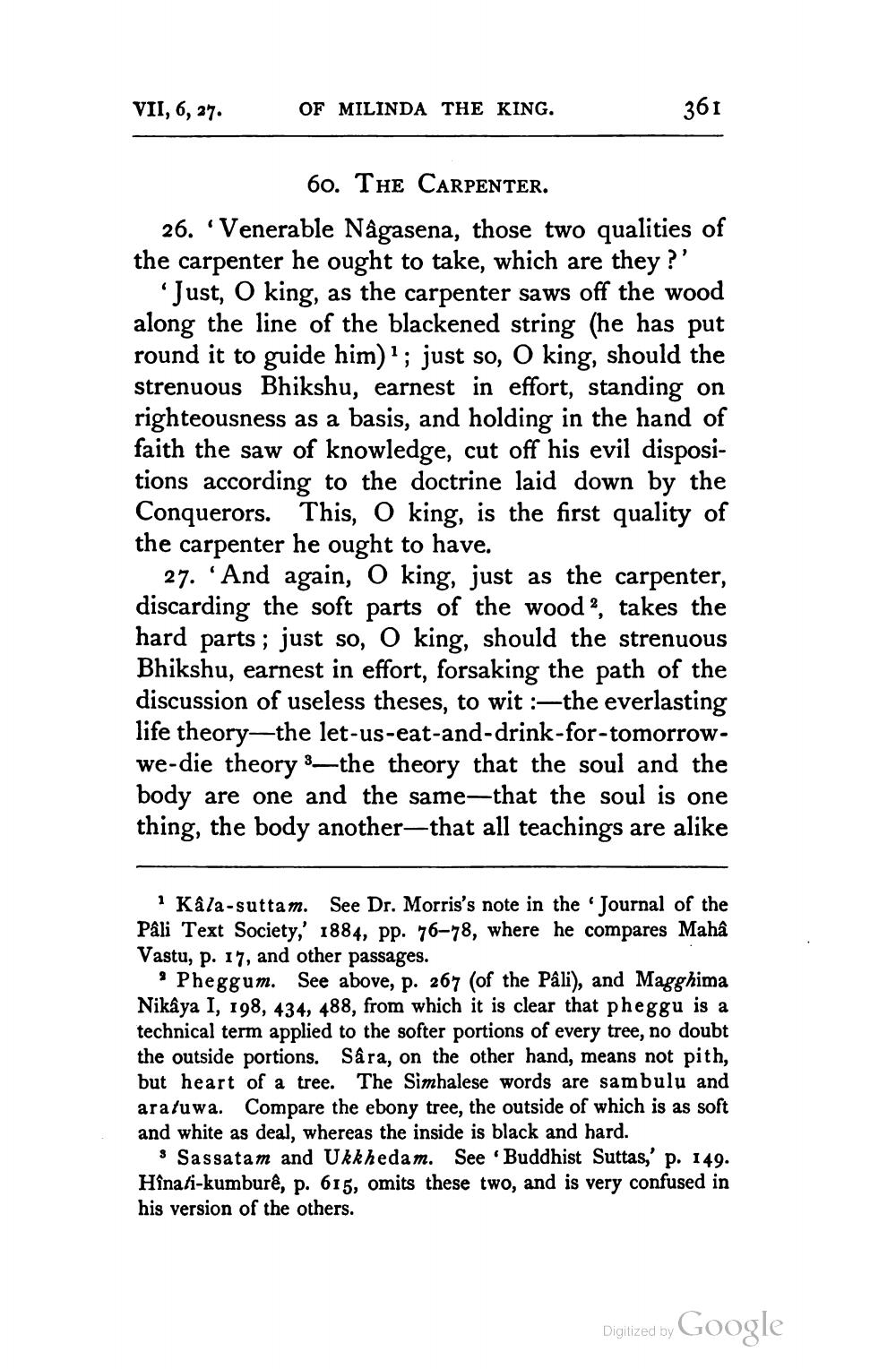________________
VII, 6, 27.
OF MILINDA THE KING.
361
60. THE CARPENTER. 26. Venerable Nâgasena, those two qualities of the carpenter he ought to take, which are they?'
Just, О king, as the carpenter saws off the wood along the line of the blackened string (he has put round it to guide him)"; just so, O king, should the strenuous Bhikshu, earnest in effort, standing on righteousness as a basis, and holding in the hand of faith the saw of knowledge, cut off his evil dispositions according to the doctrine laid down by the Conquerors. This, o king, is the first quality of the carpenter he ought to have.
27. 'And again, O king, just as the carpenter, discarding the soft parts of the wood ?, takes the hard parts; just so, O king, should the strenuous Bhikshu, earnest in effort, forsaking the path of the discussion of useless theses, to wit :—the everlasting life theory—the let-us-eat-and-drink-for-tomorrowwe-die theory :—the theory that the soul and the body are one and the same—that the soul is one thing, the body another—that all teachings are alike
Kâla-suttam. See Dr. Morris's note in the Journal of the Pali Text Society,' 1884, pp. 76–78, where he compares Mahâ Vastu, p. 17, and other passages.
9 Pheggum. See above, p. 267 (of the Pâli), and Magghima Nikaya I, 198, 434, 488, from which it is clear that pheggu is a technical term applied to the softer portions of every tree, no doubt the outside portions. Sâra, on the other hand, means not pith, but heart of a tree. The Simhalese words are sambulu and ara tuwa. Compare the ebony tree, the outside of which is as soft and white as deal, whereas the inside is black and hard.
S Sassatam and Ukkhedam. See Buddhist Suttas,' p. 149. Hînati-kumburê, p. 615, omits these two, and is very confused in his version of the others.
Digitized by Google




